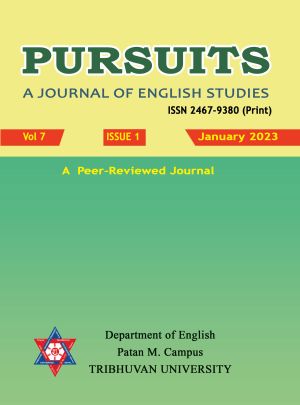Artistic Craftsmanship and Architectural Representation of Newar Rituals in the Heritages: Study of Krishna Mandir and Adinatha
DOI:
https://doi.org/10.3126/pursuits.v7i1.55383Keywords:
Cultural history, craftsmanship, jatra, eroticism, representational artsAbstract
Artistic-architectural craftsmanship in and around the Krishna Mandir in Patan and Adinath Temple in Chovar Kirtipur are based on myth making of the factual and fictional world representation of the history of art and artistic development. Arts, performances and activities of the god-goddesses carved in the statues and portraits reflected there in different positions are researchable. Erotic activities carved in the statues, tudals and roofs expose then activities of gods-goddesses that reflect the history of our ancestor’s and the present ritual groups worship there on the statue with certain expectations as they believe that the honor of gods-goddesses is to fulfill their dreams and desires with their blessings. The objective of this article is to show the importance of historical arts and architectural craftsmanship-based activities that create the relationship among nature, religion and human-non human activities. To achieve the research goal, this study centers in ritual activities and artistic representation on the historical places of Adinath Temple in Kirtipur and Krishna Mandir at Patan in Nepal. This researcher applies Cultural and Environmental study methods through field visit applying interview-based technique. Finding of this paper is that the carving nature and carved portraits in and around Krishna Mandir and Adinath Temple are reflections of the socio-cultural activities connected with cultural history.




